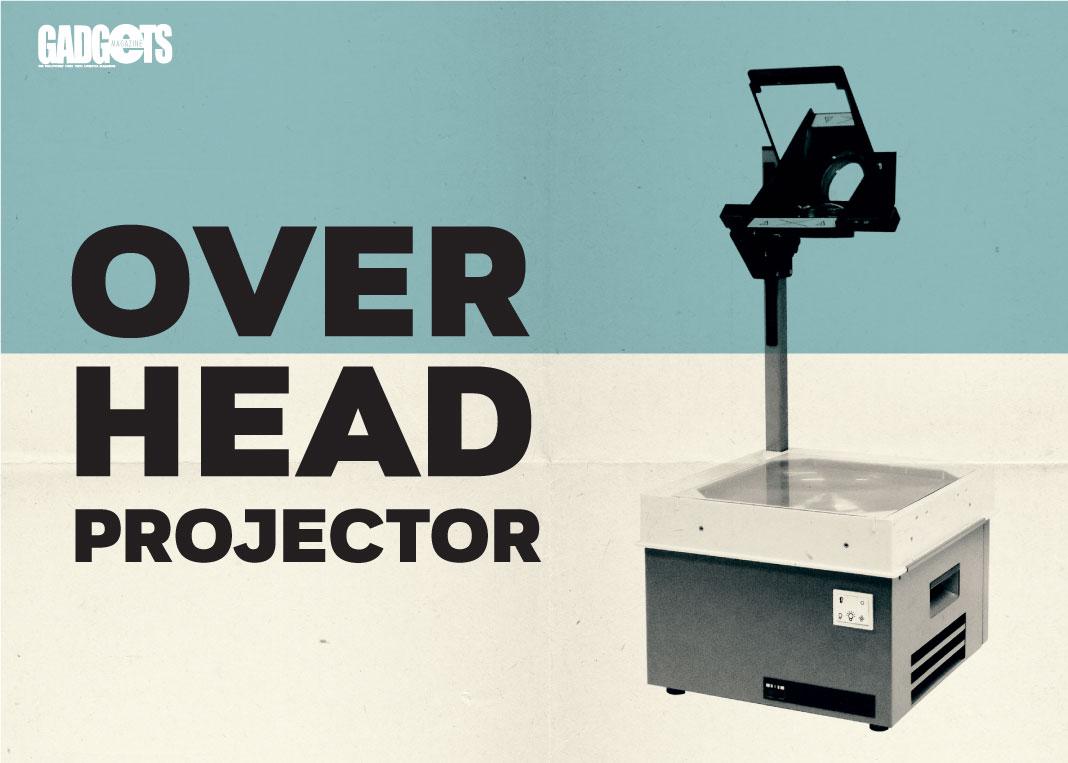You’ve seen one in every classroom (especially if you are my age or older), and they’ve been used to highlight important things you learn in any sort of class, whether it be Math, English, History, or anything in particular. The overhead projector has been a very important teaching tool for teachers in the past, and even has applications outside of the classroom.
The predecessor of the overhead projector was the magic lantern (Lanterna magica) which came about in the 17th century. However, it was only used for educational purposes and was quite bulky. Christiaan Huygens, more widely known as the inventor of the pendulum clock, was considered the inventor of the magic lantern. He described a projection system with a focusing lens and text or pictures painted on a concave mirror that reflected sunlight. German Jesuit Athanasius Kircher developed the steganographic mirror, which also used a focusing lens and text or pictures painted on a concave mirror which reflected sunlight.
By the 19th century, there were prototypes of the actual overhead projector. French physicist Edmund Becquerel is credited with developing the overhead projector as you see it today. Jules Duboscq demonstrated his device in 1866. The invention crossed the Atlantic Ocean to the United States by 1880. Henry Morton continued the development of the overhead projector and it was marketed as a “vertical lantern.” The utilization of transparent sheets that are used in overhead projectors were also developed in the United States, and were used for military training in World War II and also at schools such as the United States Military Academy. Other applications included police work, where they used cellophane rolls across a 9-inch stage which allowed facial characteristics to be displayed.
By 1953, Buhl Industries was the first company to work on overhead projectors; it refined the optical instruments in the overhead projector and its projection lens. This is where the use in schools became widespread. Roger Appeldorn at IBM was tasked to utilize transparency film; 3M eventually started creating their own overhead projectors by 1962. It was smaller than previous overhead projectors and could be folded. The United States generally funded this through the Federal Aid to Education program which boosted the sales of overhead projectors from the 1950s into the present day.
Why was it so popular in education? Teaching materials can be put on plastic sheets and directly write on them using non-permanent washable color marking pens. The overhead projector also indirectly created a new classroom dynamic: it allowed teachers to directly face their students instead of having their back to them and writing on the blackboard or whiteboard as was previously done. By the late 1980s to early 1990s, LCD technology began to be used in the overhead projector. However, now there is something more powerful—computer projection systems that can put Microsoft PowerPoint presentations and other documents online through PDF files and scanning.
While the projector was a large part of my learning experience, current generations have technology that far surpasses it. Some students are able to use tablets and laptops to view presentations online which makes the learning experience a lot easier. But I will never forget the overhead projector and its presence in my classrooms over the years.
Also published in GADGETS MAGAZINE June 2019 Issue
Words by Jose Alvarez
